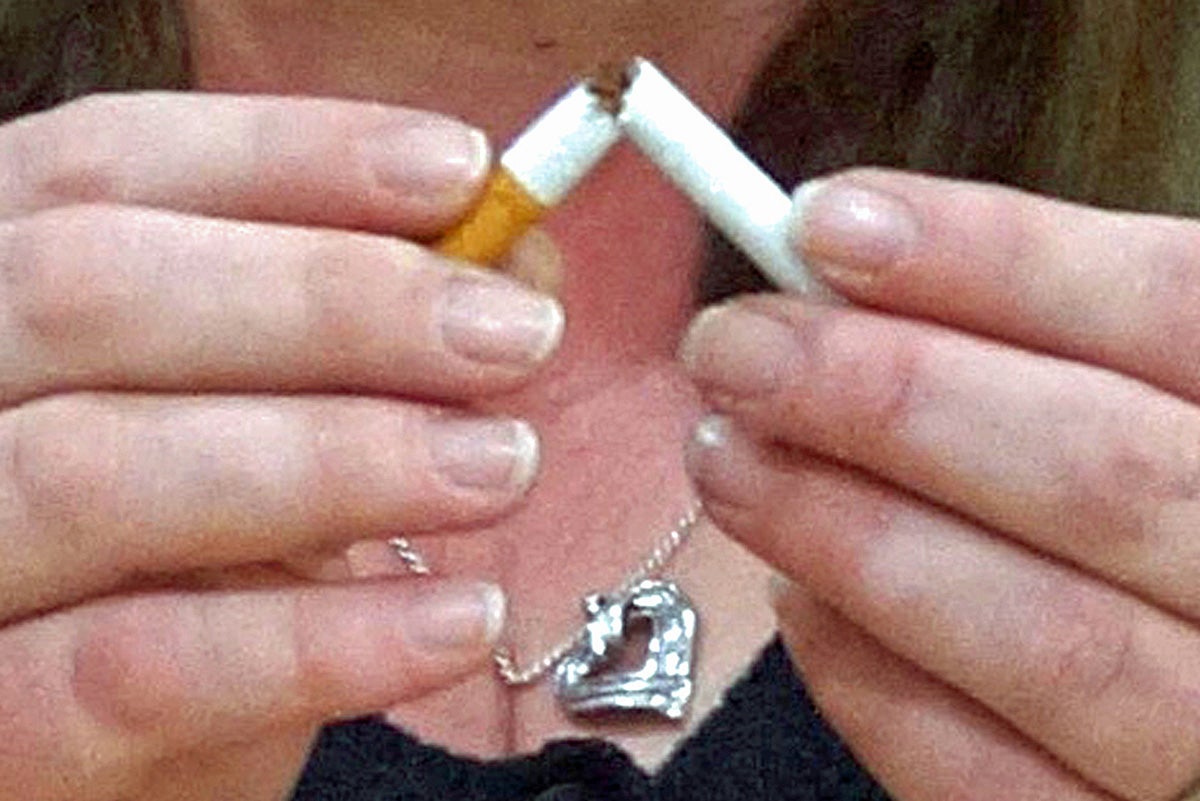When You’re Ready to Stop Smoking, St. Mary’s Is Here to Help
November 15, 2022
By: St. Mary's Health Care System
Categories: Healthy Living, Heart Health
Thursday’s Great American Smokeout is a great way to start
Thursday, Nov. 17 is the annual Great American Smokeout. On this day, St. Mary’s joins with thousands of other organizations to urge tobacco users to start their journey to freedom and enjoy a smoke-free lifestyle. The Great American Smokeout began in the 1970s and has been held annually ever since due to its powerful effects on Americans’ attitudes about smoking.
According to the CDC, approximately 30.8 million American adults smoke, and every day, about 2,000 teens under age 18 smoke for the first time. Studies show that nicotine in cigarettes is one of the most powerful – and deadly – addictions a person can have. Because smoking (and vaping!) is so addictive, quitting can be a major challenge that many cannot complete on their own. The good news is, there are many resources available that can help.
One of the most effective resources is the American Lung Association’s Freedom From Smoking class, which St. Mary’s Respiratory Services offers at least twice a year. Nothing beats personal guidance from someone who has been there. St. Mary’s respiratory therapist Todd Drake is an ex-smoker and certified Freedom from Smoking instructor who is ready, willing and able to help. The next five-week session starts Jan. 3, 2023.
Freedom is within reach
According to Todd, Freedom From Smoking works for many people because it is personalized to the individual and their specific needs and goals. To get a better understanding of the program and its powerful results, we interviewed Todd and a recent graduate of the class, Trudy McEver.
As a former smoker, Todd understands the struggles smokers face on a deep and personal level. Everyone knows it is not a walk in the park to quit smoking. Todd readily states that it took him around six tries to successfully quit. What makes the difference between success and failure? It’s simple, Todd says: Desire. The person must want to quit.
But it helps to have a network of supporters, something that many people trying to quit on their own don’t have. Todd and participants in the class create a culture of support. When participants are struggling against the cravings that come with breaking nicotine addiction, they have someone to call who will help them.
With the Great American Smokeout coming up this Thursday, there is no better time to make a quitting plan and work towards a healthier way of life than right now.
A conversation with Trudy
Because the journey to freedom is so intensely personal, many ex-smokers are reluctant to talk about it. We are deeply grateful to Trudy McEver, a supervisor in St. Mary’s PBX/Telecommunications Department, for sharing her story with marketing intern Bansari Shah. St. Mary’s honors all those who make the attempt to break free. We are here to help when you are ready.
Q. What is your history with smoking?
A. I started smoking in college because everyone was. I have smoked for 40 years except during my pregnancy.
Q. What impact did smoking have on you and your family and friends?
A. No one wanted to ride in my car. I did not smoke in my house, but I did in my car. My husband, parents, siblings and kids are all non-smokers, so they hated it.
Q. Have you tried to quit before?
A. The only time I quit or tried to quit was when I was pregnant.
Q. What motivated you to break free?
A. My children tell me it is socially unacceptable to smoke but I am not sure why I decided to quit.
Q. What about this program resulted in your success?
A. Todd is a wonderful teacher. He would call and check in. I was also given different coping methods.
Q. What are you doing to ensure that you maintain your life as a non-smoker?
A. Todd motivates me all the time. He talked about staying away from situations that would cause you to smoke, like parties, and also to do things to help with the cravings, like exercising, wearing patches and having a support group. But the bottom line is, I am just not smoking
Q. Is anything different now?
A. Yes! My family is happy. My husband bought me a car!
A conversation with Todd
Q. Given how much we know about the damage caused by smoking, it seems unusual to find a respiratory therapist who used to smoke. What is your history with smoking?
A. I was raised in a Christian, tennis-playing family, but I started smoking at Georgia Southern University at a marching band party. I had tried it a few times earlier but it never stuck. This time it did. Many of the drummers at GSU smoked, so it seemed like the cool thing to do.
Q. How long have you been a non-smoker?
A. I have been tobacco/nicotine free for 16 years. It took about six quit attempts for me to be successful.
Q. What steps had you taken prior to stop smoking?
A. My older brother and I had competitions to see who could stop smoking the longest, had short term goals of fewer cigarettes per day, and time-frame goals during my quit attempts in the past.
Q. Why did they not work and what parts of these programs were useful?
A. Most of them were successful for a short time, but my own attempts were not in an organized program like Freedom from Smoking. I could have used the support, insights into why I smoked and help when the cravings struck.
Q. Are there particular characteristics of smokers that increase or decrease their likelihood for success?
A. The only single characteristic needed is desire.
Q. What are effective strategies for quitting and/or what is different about the Freedom from Smoking program that makes it better?
A. Freedom from Smoking individualizes the program to the person and their history of attempts. It provides insights into why you smoke and support as you quit. That’s very important. It’s very hard to quit something as addictive as smoking by yourself.
Q. Are the issues with smoking the same as vaping?
A. Yes. The common threads between the two is nicotine-dependence. Both cause self-harm.
Q. What are your goals for the program and how do you intend to accomplish them?
A. We hope to expand the program to vaping education and cessation for local school systems. Vaping is a major health problem for our middle and high schools.
Q. Are there common characteristics you see among the people in your classes?
A. Like most people, most are well aware of the health problems smoking can cause, not just lung cancer but many other conditions such as mouth and throat cancer, COPD, heart attack and stroke. After they have been smoke-free for several days, many of them are surprised at how much better their sense of smell becomes and how much better food tastes. Many of them are also surprised to see how much money they had been spending and how much more they now have for other things. Another thing I find is that many adults who smoke feel a lot of shame about their addiction; some even keep it a secret from their family!
Q. Why is it important to you to help others break free?
A. I am just happy that I can help people with what seems like a small step to stop smoking but is really the best thing they can do for their health and quality of life.
For adults ready to quit smoking, St. Mary’s offers Freedom From Smoking twice a year, with the next class series beginning Jan. 3, 2023. For more information, call (706) 389-2915 or learn more about Respiratory Services.
Discover more resources
This article was written by Marketing Interns Olivia Kernels and Bansari Shah and Public Relations Manager Mark Ralston.



